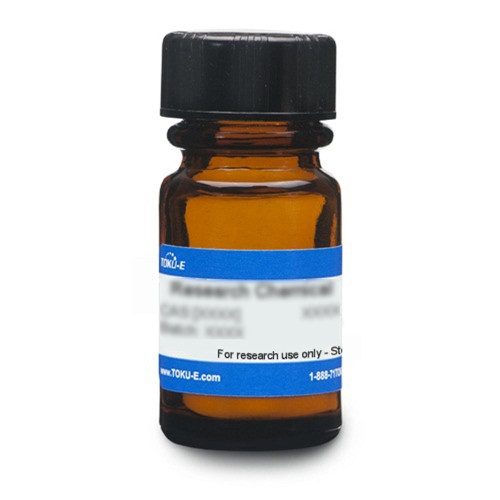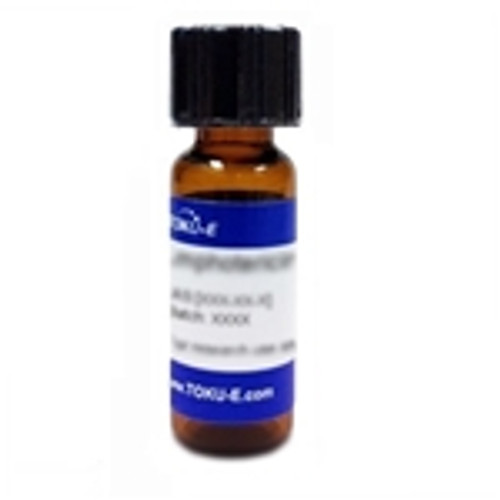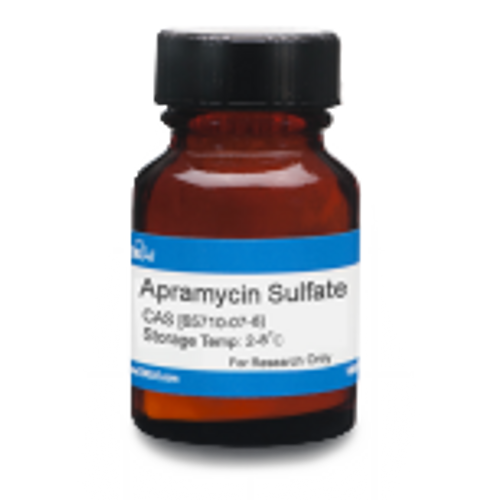Cefquinome Sulfate is the sulfate form of Cefquinome, a semisynthetic, broad-spectrum, fourth-generation aminothiazolyl cephalosporin with antibacterial properties. Antibacterial activity of Cefquinome is similar to cefpirome and cefotaxime. Cefquinome is resistant to β-lactamases. The compound commonly used in cell culture and susceptibility testing. It is also used to study bacteria causing acute mastitis, dermatitis, and respiratory diseases in veterinary research applications.
Cefquinome is slightly soluble in DMSO and methanol.
| Mechanism of Action | Cephalosporins interfere with PBP (penicillin binding protein) activity involved in the final phase of peptidoglycan synthesis. PBP’s are enzymes which catalyze a pentaglycine crosslink between alanine and lysine residues providing additional strength to the cell wall. Without a pentaglycine crosslink, the integrity of the cell wall is severely compromised and ultimately leads to bacterial cell lysis and death. Although resistance to cefquinome is rare, they are active against bacteria carrying the AmpC-type β-lactamase resistance mechanism. |
| Spectrum |
Broad-spectrum targeting Gram-positive and Gram-negative bacteria including E. coli, Pasteurella spp, Salmonella spp, and Enterobacteriaceae spp. It can be used against the bacteria causing bovine septicemia such as E. coli, Salmonella spp, Campylobacter spp., Klebsiella spp, and Staphylococcus spp. |
| Microbiology Applications |
Representative MIC values include:
For a representative list of Cefquinome MIC values, click here. |
| Eukaryotic Cell Culture Applications | Staphylococcus aureus is one of the common pathogens to cause subclinical bovine mastitis. Isolates from milk samples were anayzed to determine their capacity to produce biofilm (exopolysaccharidic matrix that aids in adherence and colonization, protecting the bacteria from host immune system and antimicrobial action) on bovine primary mammary epithelial cells. They also tested isolates for susceptibility to Cefquinome Sulfate in the presence of biofilm. They found that in the presence of biofilm no isolates grew, demonstrating its efficacy. After the biofilm was broken by sonication, all isolates were recovered, confirming the protective properties of the biofilm (Castilho et al, 2017). |
| Molecular Formula | C23H24N6O5S2 ∙H2SO4 |
| Solubility | Slightly soluble in DMSO and methanol. Degradation in aqueous solutions. |
| References |
Ahmad I et al (2015) Integration of PK/PD for dose optimization of Cefquinome against Staphylococcus aureus causing septicemia in cattle. Front. Microbiol. 6:588 PMID 26136730 Castiho IG et al (2017) Host-pathogen interactions in bovine mammary epithelial cells and HeLa cells by Staphylococcus aureus isolated from subclinical bovine mastitis. J. Dairy Sci. 100(8):6414-6421 Chin N, Gu J, Fang W and Neu HC (1992) In vitro activity of Cefquinome, a new cephalosporin, compared with other cephalosporin antibiotics. Diag. Microbiol. Infect. Dis. 15(4):331-337 PMID 1611848 |







